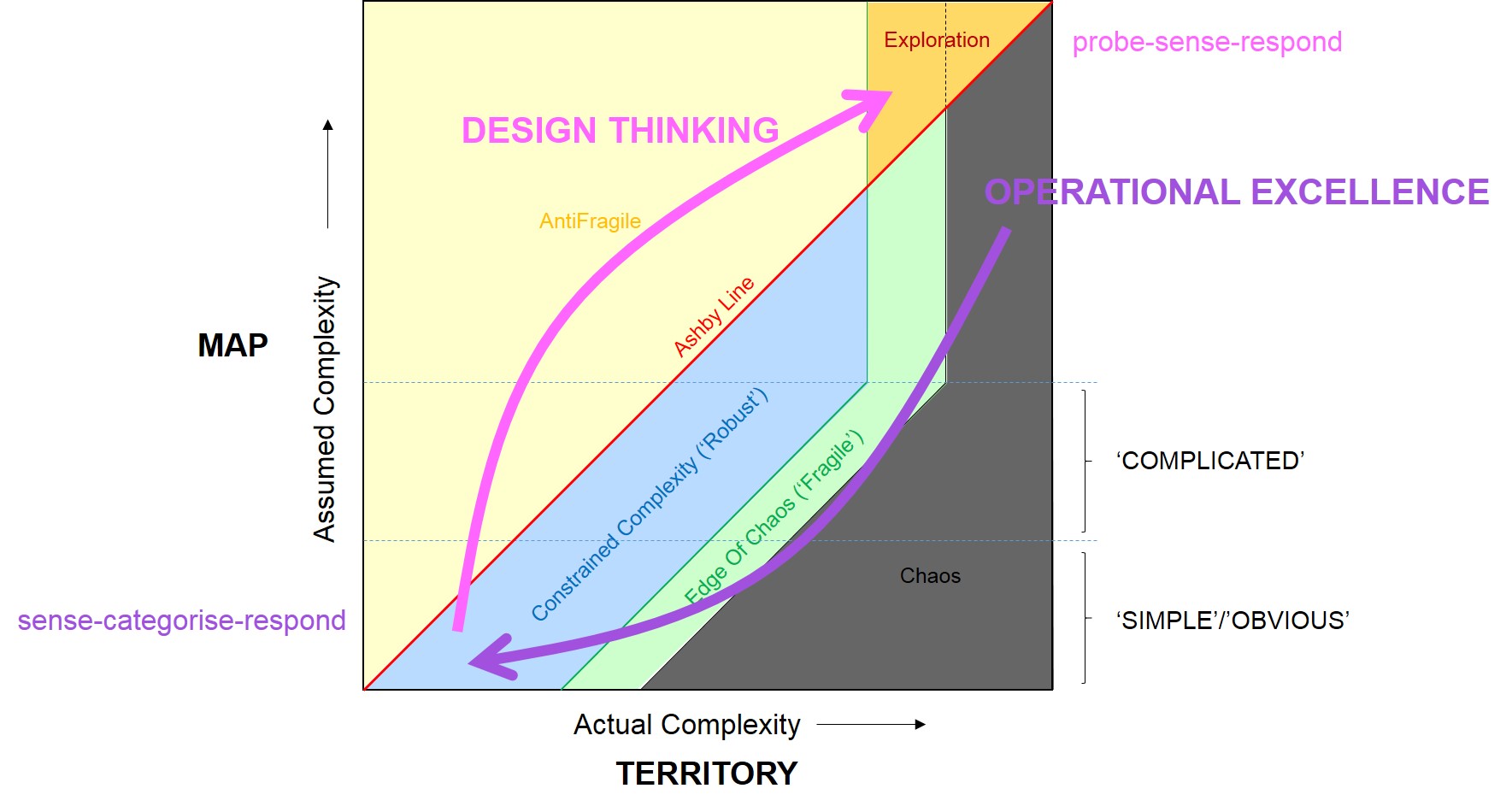“I shall not today attempt further to define the kinds of material I understand to be embraced within that shorthand description [“hard-core pornography”], and perhaps I could never succeed in intelligibly doing so. But I know it when I see it, and the motion picture involved in this case is not that”
United States Supreme Court Justice Potter Stewart
When I tried to find a coherent definition of ‘Design Thinking’ I quickly discovered some very murky waters. “Design Thinking is a methodology used by designers to solve complex problems, and find desirable solutions for clients.” Or, “Design Thinking draws upon logic, imagination, intuition, and systemic reasoning, to explore possibilities of what could be, and to create desired outcomes that benefit the end user (the customer)”. Or how about, “a discipline that uses the designer’s sensibility and methods to match people’s needs with what is technologically feasible and what a viable business strategy can convert into customer value and market opportunity.”
Personally, I’m inclined to side with Supreme Court Justic Potter Stewart when in 1964 he was asked to judge whether Louis Malle’s film, The Lovers’ was obscene or not., I know good Design Thinking when I see it. Or, actually, more often, I know good Design Thinking, when I observe it’s opposite.
And very often that ‘opposite’ looks an awful lot like ‘Operational Excellence’. Operational excellence is all about removing waste and maximizing the efficiency of a system, reducing things to procedure and simple instructions. It is the way of thinking given to the world by Frederick Winslow Taylor: systematically study a system, break it down into its smallest parts and find the ‘one best way’ of doing each of those small parts. Whereas design is all about escape from the norm and creation of new solutions.
The key tenets of Design Thinking involve mass collaboration, empathy with the customer, and, perhaps most importantly of all, the idea of earlist possible prototyping. Give the customer something to play with as quickly as possible so you can begin to learn what they really want. Fail fast, fail forward.
I was recently running a Design Thinking workshop and was trying to talk about the polar opposite differences between Operational Excellence and Design Thinking in terms of complexity. I drew a version of this picture:
It’s a model from an article I wrote in the September 2014 issue of the Systematic Innovation ezine (Issue 150) about one of our PanSensic complexity measurement tools. Plotted onto this picture of the actual-versus-assumed complexity of a situation, the polar opposite differences between Operational Excellence and Design Thinking become quite vivid. In Operational excellence, we’re trying to remove complexity such that we can manage the business through highly scalable sense-categorise-respond feedback loops. In Design Thinking we’re trying to embrace complexity by adopting exploratory, ‘probe-sense-respond’ approaches.
The picture also, I think, provides a pretty good illustration of what Design Thinking really is: a procedure for getting problem solvers into an exploration mindset that proactively utilises system complexity.
Okay, I realise this definition is no less fuzzy than any of the others. But now the connection to complexity is explicitly made, I realise I shouldn’t ever expect it to be.

